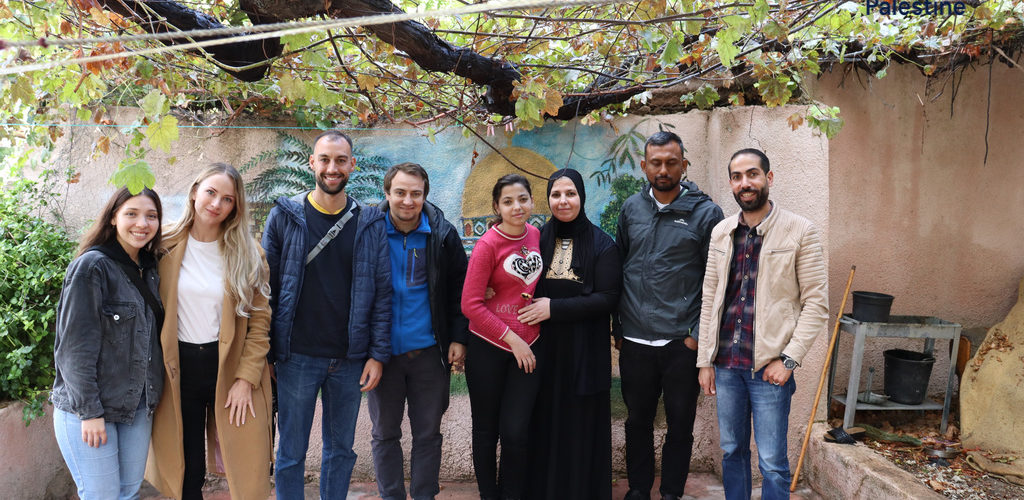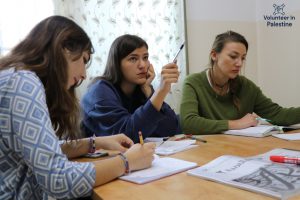Reasons to Visit Palestine: Whether you are already planning a trip to Palestine and looking for more information, have never heard of Palestine, or are curious about whether it’s safe and a good idea to visit Palestine, this article is for you. Palestine is an incredible country, like nowhere else in the world, and yes, it’s safe for international tourists to visit!
Palestine has thousands of years of history, religion, and culture; it has delicious traditional food, drinks, and sweets and, perhaps most importantly – very warm, friendly, and welcoming people. While you may have heard or seen many negative portrayals of Palestine and Palestinians in the media, these are misrepresented and not true. When you visit Palestine, you will find a totally different reality to what you have probably heard.
While tourists were mostly unable to visit Palestine during the first two years of the COVID-19 pandemic, since 2022, international tourists have once again been able to visit Palestine, and the numbers have been increasing. People visit Palestine for a variety of reasons, whether for a religious pilgrimage, for a holiday, for backpacking, for volunteering, or to show solidarity with the Palestinian people and get a deeper understanding of the Palestinian Issue and life under Israeli Occupation.
Keep reading to discover 20 Reasons (in no particular order) why you should visit Palestine. Of course, once you visit, you might just discover many more reasons for yourself.
Table of Contents
It’s The Holy Land
Palestine is the Holy Land, and some of the holiest sites in the world are here. Whether you are religious or not, there are many significant and beautiful sites in Palestine.
The holiest sites in Christianity are in Palestine; these include the Church of the Holy Sepulchre in Jerusalem, where Jesus was believed to be crucified and later entombed. In Bethlehem (“Beit Lahm” in Arabic), you will find a number of sites such as the Church of the Nativity, where Jesus was believed to have been born, and the Milk Grotto, where it is believed Mary stopped to breastfeed Jesus while they were fleeing to Egypt. You will also find many other Christian holy sites in Palestine, such as the River Jordan, where Jesus was baptized, and Shepherds’ Field in Beit Sahour, where an angel appeared and announced the birth of Jesus. Additionally, there are many other churches in cities such as Ramallah, Tulkarem, Bethlehem, Jerusalem, and Gaza City.
The third and fourth holiest sites in Islam are in Palestine, Al-Aqsa Mosque in Jerusalem (“Al Quds” in Arabic) and Al-Ibrahimi Mosque in Hebron (“Al Khalil” in Arabic). You will also find countless mosques all over Palestine because it is a predominantly Muslim country, and you are sure to hear the adhan, which announces prayer (“salah” in Arabic) time.
Some of the holiest sites in Judaism are also in Palestine. For example, Machpelah Cave in Hebron and the Temple Mount in Jerusalem. There are also a number of sites that are holy in all three of these monotheistic religions. For example, on the southern outskirts of Jerusalem sits Rachel’s Tomb, notable for its sacred atmosphere despite a surrounding military zone. Among the bustling chaos of Hebron city life, you can find Abraham’s Oak. It’s located on land owned by the Russian Orthodox Church alongside a small monastery.
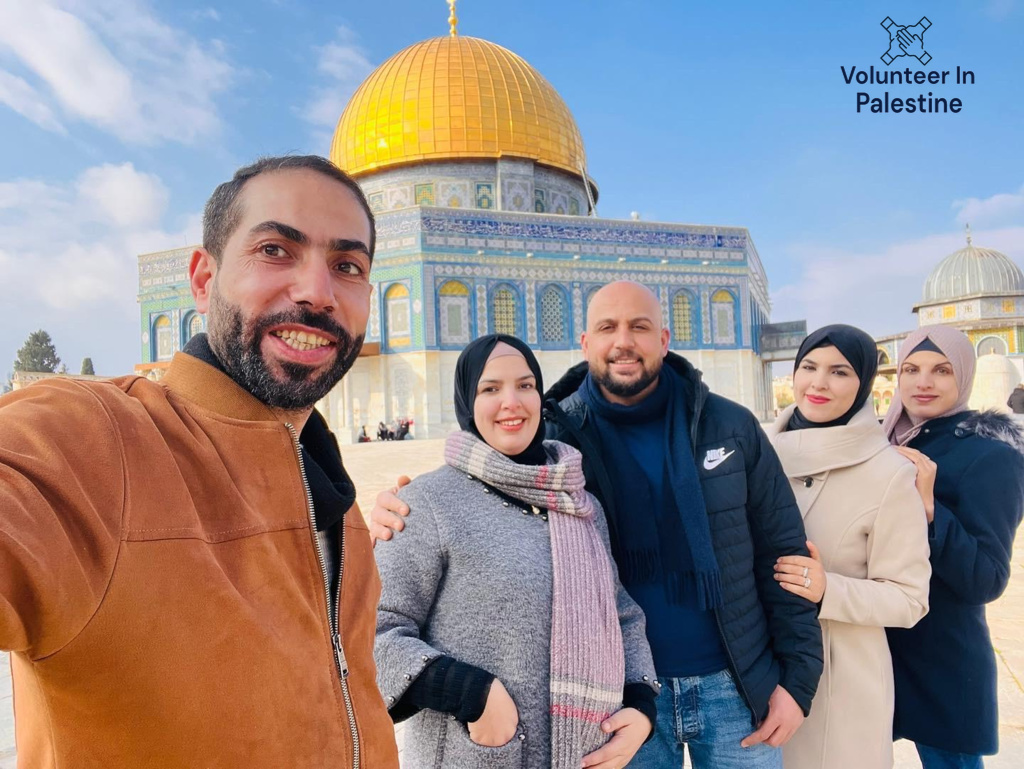
2. Christmas Happens Three Times In Four Weeks
Did you know that in Palestine, Christmas is celebrated three times? The first Christmas is 25 December for a large number of Christians, and the second, for Orthodox Christians, is celebrated on 7 January. Finally, Armenian Christians in Palestine celebrate Christmas on January 19 (because they follow a different calendar from other Armenian Christians in Armenia and around the world.)
No matter your religion, Christmas time is a particularly vibrant time to visit Palestinian cities such as Jerusalem, Bethlehem, and Ramallah, where you can see the Christmas lights and decorations and enjoy the atmosphere. Each Christmas Eve (24 December, 6 January, and 18 January), there is a Christian scout parade through the old city of Bethlehem to celebrate. Particularly on 24 December, you can see a large number of scout groups marching, playing instruments such as the bagpipes and drums, from all over Palestine. Many people also visit Bethlehem during this time to attend the midnight mass on Christmas Eve at the Church of The Nativity.
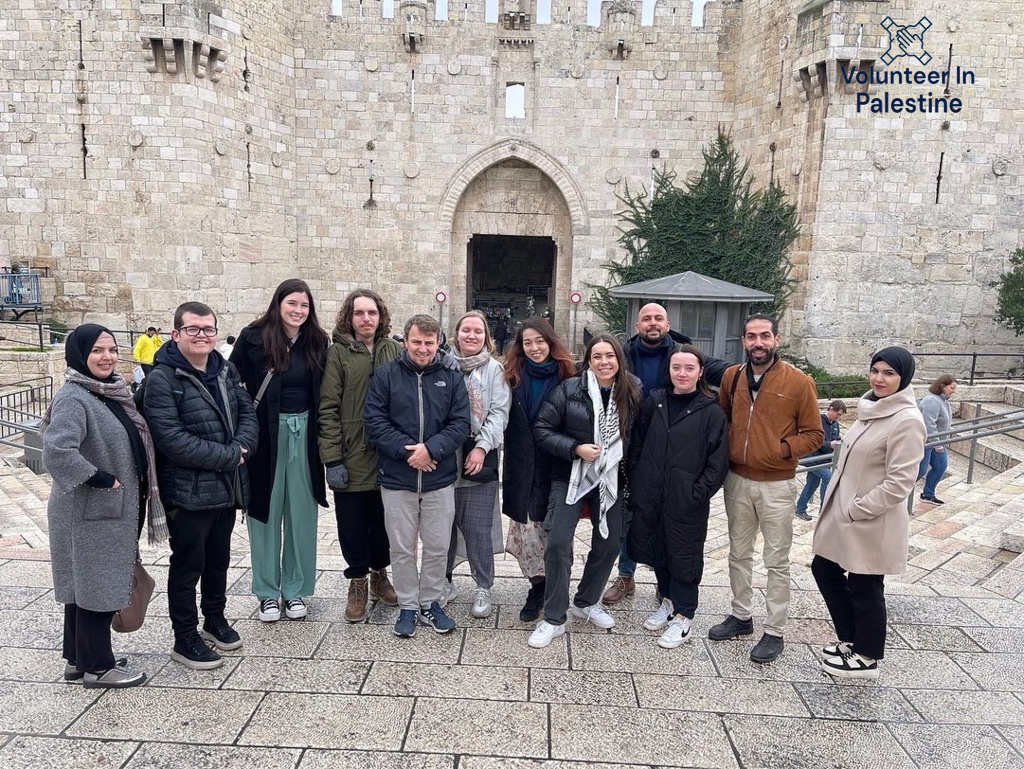
3. Because You Need to Know the Truth
When you’re having coffee on a balcony overlooking a city skyline or playing football with your Palestinian host brother, it can be easy to forget Palestine‘s tumultuous history. Unfortunately, the reality of the Israeli occupation is inescapable for those who call Palestine their home. Walls exist in many forms; the separation and annexation wall surrounding the West Bank is the most recognizable, but economic, political, social, and mental blockades are obstacles that can be just as limiting. It can be challenging to find accurate information online about the Palestinian Issue. One reason for this is that Palestinians often face censorship when using their voices online or on social media to communicate their reality under occupation to the outside world.
The truth about Palestine is very often misrepresented and falsified in the media, and if you tell your friends or family that you are going to visit Palestine, they might tell you that you shouldn’t go. However, the best way to learn something is often to see and experience it for yourself. Once you visit Palestine, you will see a totally different reality around you from what you’ve heard in the news. Melanie, a Canadian also participating in the TESA (Teach English Study Arabic) program, reflected: “Regardless of opinion, it’s interesting and important to see the complexity of the political and social situation. It will challenge your views that anything is black and white.”
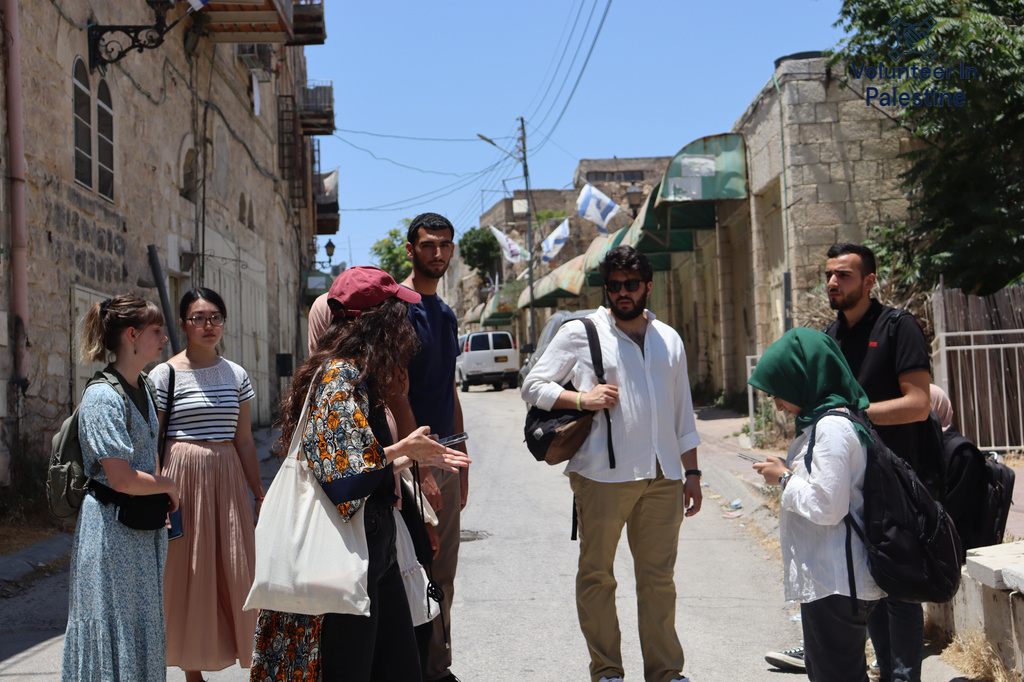
4. To Support The Palestinian Economy
The Israeli occupation of Palestine greatly restricts the economy and livelihoods of Palestinians both inside Palestine as well as online. For example, PayPal prohibits Palestinians in the West Bank from using its services with their Palestinian bank accounts, severely restricting e-commerce for Palestinians. So one of the best ways to support Palestinians financially is to visit and spend your money on Palestinian-owned accommodation, shops, cafes, restaurants, and transportation.
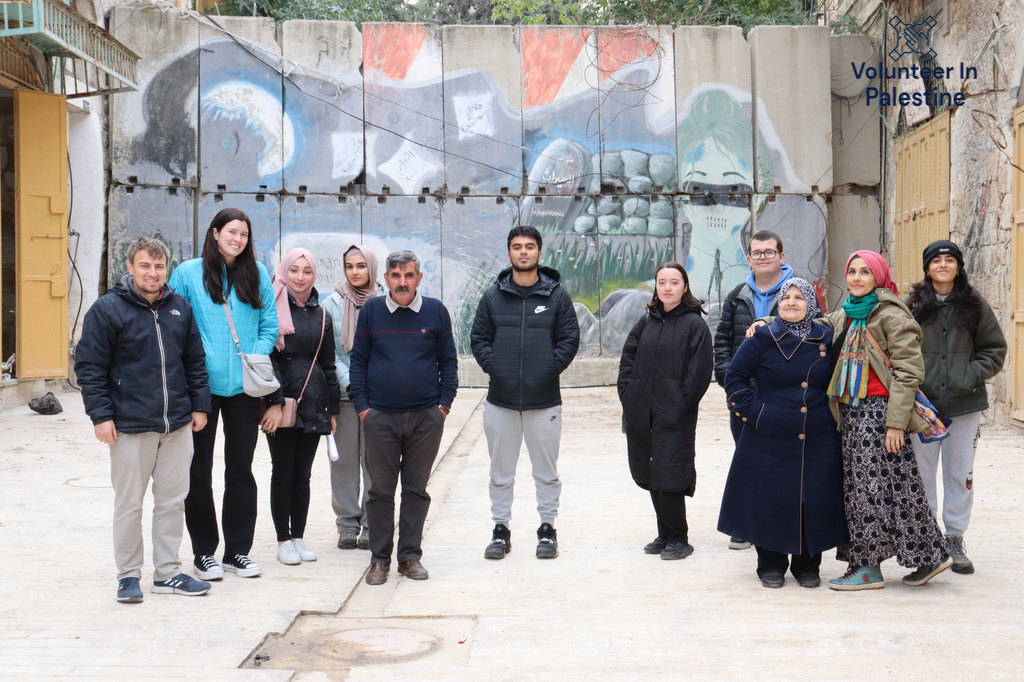
5. Explore The Oldest City In The World
Jericho, or “Areeha” in Arabic, is the oldest continually inhabited city in the world, and it’s in Palestine. While the exact age of Jericho is unknown, it is estimated to be around 11,000 years old. Did you know that it’s also the lowest city in the world? You can take a cable car to the Mount of Temptation, which is where it is believed that Jesus was tempted by the devil.
You can also walk around the city, go hiking, float in the Dead Sea, or visit a spring. There are historic archaeological sites of tremendous importance in Jericho, such as Hisham’s Palace (built in the 8th century), the Greek Orthodox Monastery of St. George, Nabi Musa (an Islamic shrine where some believe the prophet Moses was buried), as well as a number of other archaeological ruins.
6. Because It’s A Beautiful Place
Whether you enjoy the sight of tree-covered hills that seem to go on forever or the glow of city lights along an urban skyline, Palestine has something to offer everyone in terms of aesthetic appeal. Smaller towns in the south, such as Beit Sahour and Beit Jala, have beautiful architecture and are surrounded by greenery, and the mountainous landscape makes an awe-inspiring view easy to find. Particularly in the northern West Bank, there are many beautiful places to go hiking.
You will also see, when taking a drive across Palestine, the terracing system used all throughout the land. The terracing system shows how the relationship between Palestinian farmers has lasted for hundreds and thousands of years. Palestine is very mountainous in many areas, so retaining walls are built from dry stone not only to make use of the mountainous terrain but also to prevent soil erosion and retain moisture. One example of an irrigated terrace system is the village of Battir (between Bethlehem and Jerusalem), which is a UNESCO World Heritage Site. While the exact age of this irrigation system is unknown, some estimates say it is over 3,000 years old, and others say over 5,000 years old.
The more arid regions, such as those surrounding the Dead Sea, provide a stunning contrast to the life that they sustain. The metropolitan areas also contain a wealth of amazing things to see, including several different old cities, such as Jerusalem, Bethlehem, Hebron, and Nablus. For example, the souq in Hebron is colorful and lively, and the architecture of much of Jerusalem’s Old City. Did you know that both the old city in Jerusalem and the old city in Hebron are UNESCO World Heritage Sites?
There is a lot of beautiful and historic architecture that can be seen all across Palestine. For example, when you take a walk around Bethlehem’s old city, you will be able to see a variety of different architecture and designs made by Bethlehem’s diverse inhabitants over the past several hundred years. Nablus is one of the most beautiful old cities in the world, and it has many similarities to Damascus in Syria.
7. It’s Much Safer Than You’ve Probably Heard
You have probably heard many misrepresentations about Palestine in the media, but Palestine is actually a very safe destination in many regards. Palestinians are very hospitable and kind people who are welcoming to international visitors and genuinely want to help you.
Additionally, there is a very low level of street crime, such as pickpocketing. While solo female travelers may experience problems such as street harassment wherever they travel, many solo women have traveled to Palestine and felt very safe exploring by themselves. Lastly, while some international visitors might think the streets of the West Bank are full of violence, this is simply untrue. You will find that Palestine is very safe for tourists everywhere.
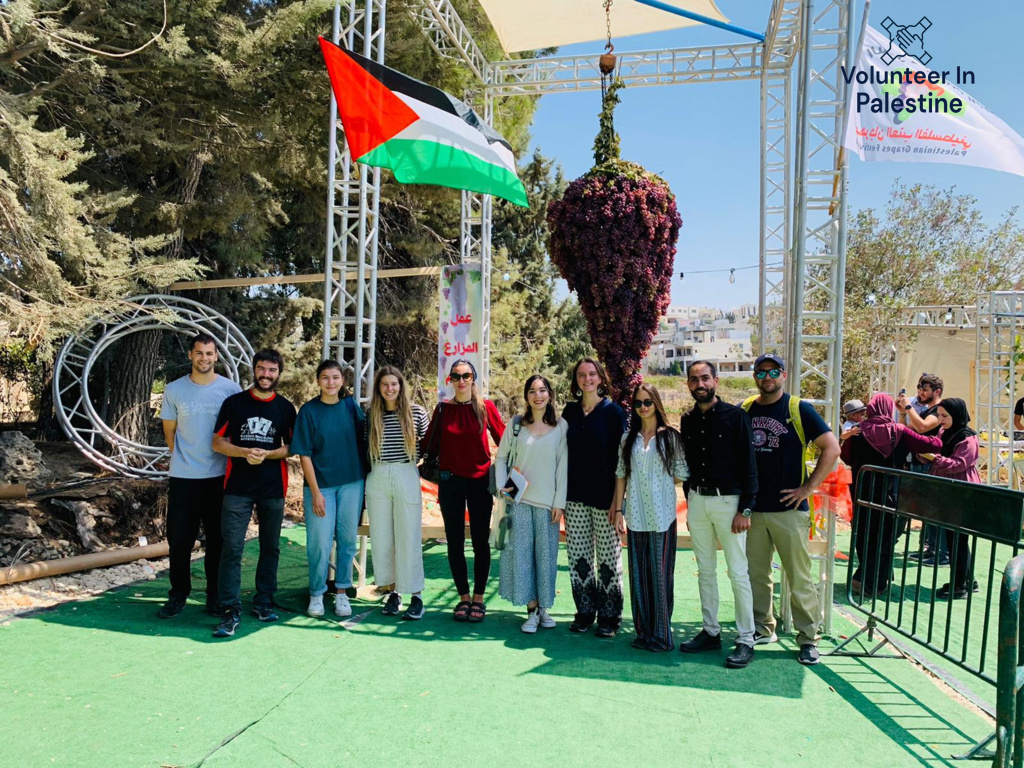
8. The Weather And Seasons
Palestine has a Mediterranean climate, which means the weather is relatively moderate. While it can get very hot in Summer, the heat is generally dry heat, and humidity is very low, which makes it much more bearable. Unlike in tropical climates, Summer days are very clear, with little to no clouds, rains, and thunderstorms.
While it can feel cold in winter, temperatures are generally moderate. Although snow is possible, it isn’t common to see large amounts of snowfall instead, rain and strong wind are more common, and sometimes thunderstorms. As with many destinations, the best time to visit is in spring, when the weather is the nicest and more flowers are in bloom.
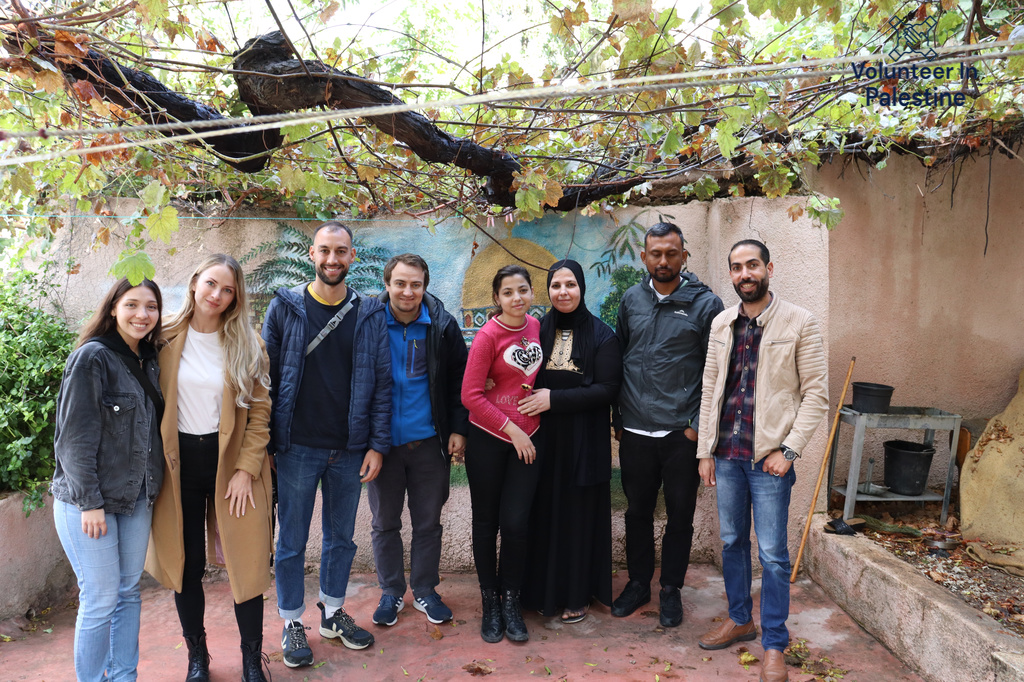
9. It’s Easy An East Country To Travel Around
Whether you are a family or traveling as a couple, in a friend group, or traveling solo, it is fairly easy to travel around the West Bank, and there is a lot to see in a relatively small landmass. So if you only have time for a short holiday, you can see a lot in that time.
While sometimes there is a lack of reliable information online about the intricacies and logistics of traveling around Palestine, Palestinian people are very hospitable and willing to help you find wherever you’re trying to go.
Even though there is no formal public transport between or within cities in the West Bank, it is easy and affordable to travel a shared taxi or “service” (pronounced like “ser-vees”). When you’re inside cities in the West Bank, it’s easy enough to walk around the city, or you can take a private or shared taxi within the city if you prefer.
10. Palestinian Hospitality
Palestinian hospitality is some of the best in the world. Palestinians are a very welcoming people, and as an international visitor, you may be invited by a Palestinian into their home. It is not uncommon for Palestinians to say to a visitor, “My home is your home.” Guests are offered every comfort; coffee, tea, fruit, food, and good conversation are the staples of Palestinian social life. When sharing a meal with a Palestinian family, it is a good idea to leave some food on your plate once you have had enough to eat. If you try to finish your plate, they will most likely put more food on your plate before you have finished and encourage you to eat more.
Even families that might not have much will share what they have and do their best to make you feel comfortable and at ease. “No matter where I went, not once did I feel like I wasn’t welcome there,” observed Lauren, an American also participating in the TESA internship program.
Friends and strangers alike will take a genuine interest in your life, history, and opinions and will readily share their own stories with you. Even if you don’t speak the same language, many Palestinians will still try to communicate with you the best they can.
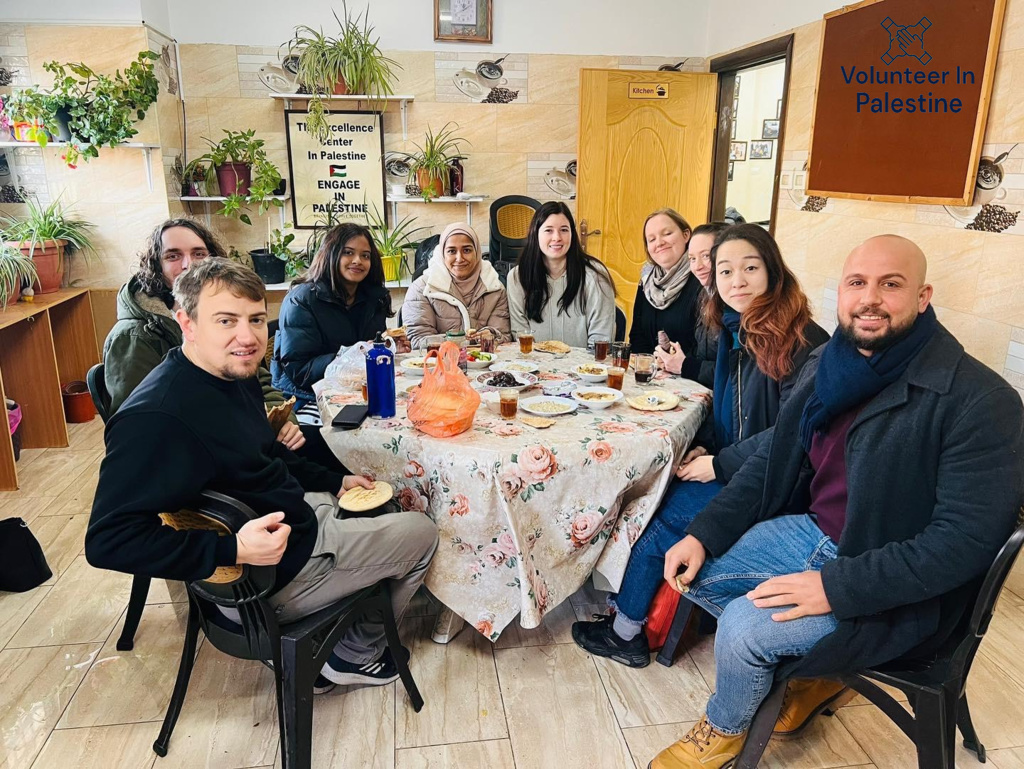
11. Palestinian Food
Palestinian food is typically fresh and healthy. You won’t find any frozen dinners or canned soups, and fast food is far less common than in a Western country, although you will find lots of falafel and shawarma. Produce is a staple of most snacks and meals, and often fresh from the garden, and many products are locally sourced. If you’re lucky enough to spend time with a Palestinian family, you’ll sample a variety of delicious homemade dishes.
Traditional Palestinian breakfast dishes include falafel, hummus, ful (stewed fava beans), mutabel (sometimes called baba ganoush), shakshouka, labneh, zeit oo za’atar (olive oil and za’atar), as well as fruit, tomato, cucumbers, olives and bread. There are several kinds of Palestinian bread, including pita bread, kayak, kayak Al Quds, taboon, and manakeesh (flatbread with za’atar and olive oil). Bread is usually made fresh in bakeries and eaten the same day in Palestine. It can be eaten with any and every meal.
For lunch or dinner, there is a wide array of delicious traditional Palestinian food. If you ask Palestinians what their favorite food is, they are very likely to say maqlouba/maqloubeh or mansaf. Rice is one of the main staples in Palestinian cuisine, and there are other rice-based dishes such as qidra/qidreh, ouzi, and mujjadara. Vegetables stuffed with rice (and usually) meat are also very common; these include waraq dawali (stuffed vine leaves), malfouf mahshi (stuffed cabbage rolls), betinjan mahshi (stuffed eggplant), kousa mahshi (stuffed zucchini or courgette) and filfil mahshi (stuffed peppers).
However, it isn’t all rice! There are various traditional soups and stews such as bamia (okra stew), fasouliya khadra (green bean stew), fasouliya bayda (white bean stew), freekeh soup, and different kinds of lentil soups. Salads are eaten with most meals, and this can include fattoush, tabbouleh salata falahiyeh (farmers salad), or salta arabiyeh (Arabic salad – tomatoes and cucumber).
You are also sure to find many kinds of locally made preserves and other pantry products in Palestine. For example, tahini (sesame seed paste), local honey, a large variety of colorful pickles, dibs (a sweet grape molasses often mixed with tahini), pomegranate molasses, a variety of jams and halawa (a sweet sesame dessert like halva). Make sure you try Palestinian dates grown in Jericho; they are extremely juicy and delicious, they are widely available for purchase around Palestine, and they make great snacks or gifts.
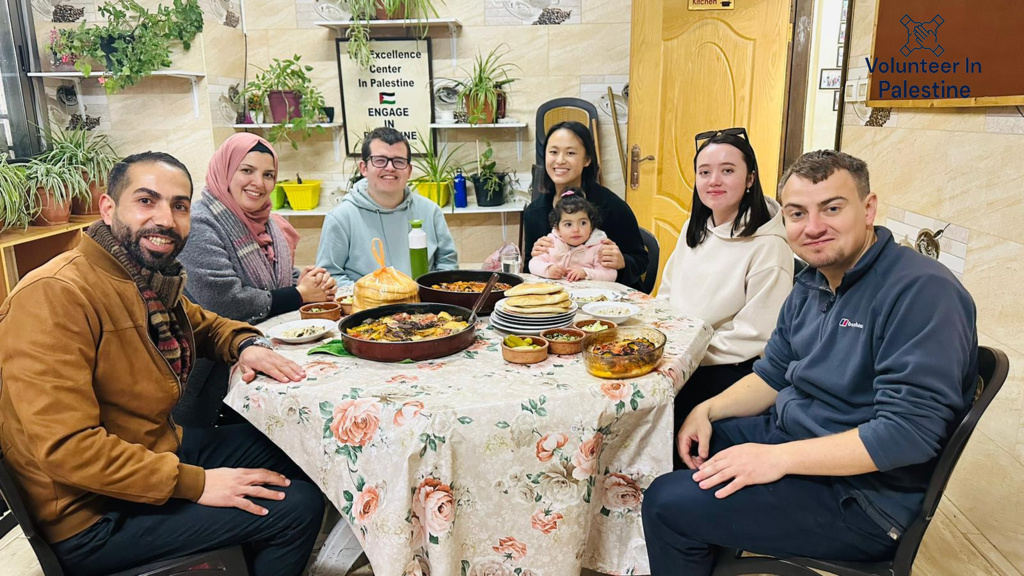
12. Palestinian Sweets and Desserts
One of the best things about Palestine is the sweets! Palestinian sweets are usually filled with nuts, dates, or cheese, and there are many different kinds of sweets to try. In Palestine, you can find traditional Palestinian sweets as well as more Western-style pastries, cakes, doughnuts, and cookies. Palestinians usually distribute sweets to others, such as baklawa or chocolate, to celebrate. Some sweets are available all year round, while others are seasonal or only made at home during certain religious holidays.
Perhaps the most famous dessert in Palestine, knafeh (a cheesy dessert), will taste a bit different depending on which city you eat it in, but the best knafeh is at Al Aqsa Sweets in Nablus.
Qatayef or Atayef is a special dessert during the holy month of Ramadan; although it can usually be found during the rest of the year, it’s not as widely available as during Ramadan.
There are many kinds of cookies in Palestine, but perhaps the best is maamoul cookies, which are usually filled with dates or sometimes with nuts and dusted with powdered sugar. Maamoul cookies are especially important for Palestinian Muslims during Eid Al-Fitr and for Palestinian Christians during Easter and are usually made at home during this time, although you can find shops selling maamoul all year round.
There are far too many Palestinian sweets to list here; the best way to find out more is to visit Palestine and try them for yourself!
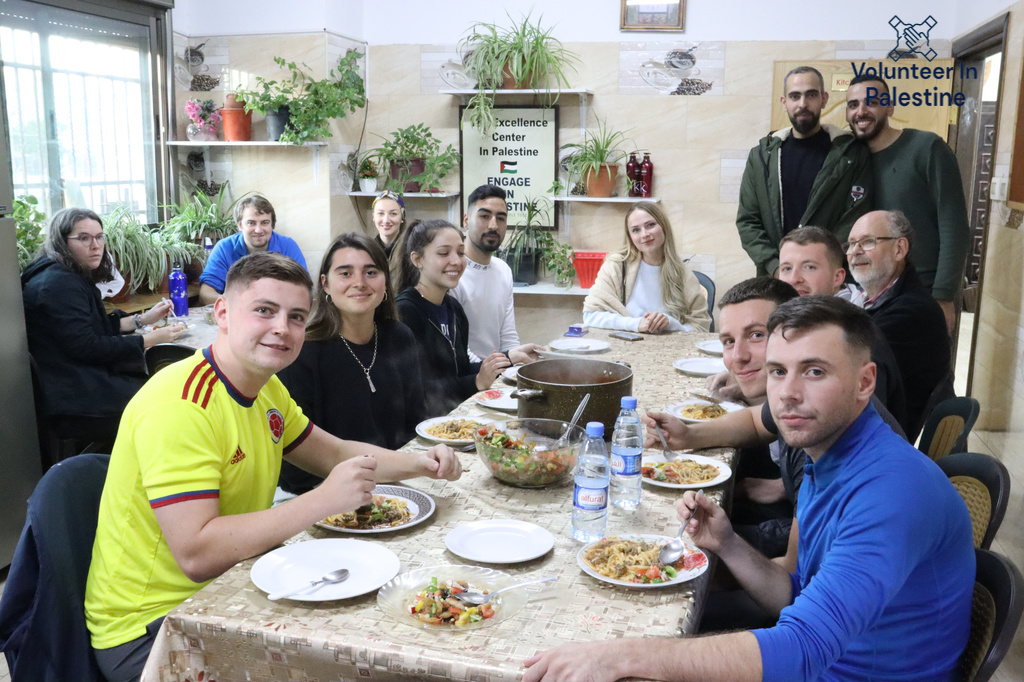
13. Palestinian Coffee, Tea, and Other Drinks
Drinks are a very important part of Palestinian culture and hospitality and are delicious. Some drinks are consistently available year-round; others are only available or consumed seasonally. There are many cafes in Palestine, and they are often open late because they are an important place for socializing. While Arabic coffee and espresso-based coffees are very popular, you will find much more than just coffee at Palestinian cafes. Many shop owners will also offer visitors a cup of Arabic coffee for free. If you are invited into a Palestinian family’s home, they are sure to offer you drinks, especially the two most important ones:
Ahweh or Ahweh Arabiya (Arabic coffee) is like Turkish coffee but with cardamom, making it much more delicious. One of the best things about Ahweh in Palestine is that there’s an element of surprise. It often tastes a little bit different each time you drink it, depending on who made it and the ingredients they used.
Shay (tea), usually with merimiya (sage) in winter and naa’naa’ (mint) at other times of the year. Sometimes you will find other herbs or rose petals added to it. Many Palestinian families will grow these herbs at home and sometimes buy them from the market. “I watched my host take the tray into the garden to pick fresh mint leaves for the tea! It was so good,” said one international volunteer.
Here is a brief list of other popular and delicious drinks you can find:
- Yansoon (anise seeds boiled in water, with or without sugar) is particularly great if you are feeling sick or to keep you healthy in winter.
- Sahlab is a thick, sweet, warm, milky drink served with raisins, coconut, cinnamon, and nuts on top. It’s particularly nice in cold weather.
- Laymoun oo naa’naa’ (lemon and mint) is especially refreshing on a hot day or if you’re feeling dehydrated. This is a cold drink made by blending ice with lemon, mint, and sugar.
- Fruit smoothies, such as mango, watermelon, strawberry, or passionfruit.
- Freshly pressed fruit and vegetable juices, such as pomegranate, orange, or carrot.
While in conservative cities like Hebron and Nablus, the consumption or sale of alcohol is socially unacceptable, there are hundreds of years of history of local alcohol production by Palestinian Christians in some parts of Palestine. For example, there is a local beer brewery (Taybeh Beer) in the town of Taybeh near Ramallah, which is open for tours. Local wine and Arak (an anise-flavored, grape-based alcohol) are also produced in and around Ramallah and Bethlehem.
During the holy month of Ramadan, you are likely to see special drinks for sale. These include qamar al-din (an apricot fruit-leather drink), lowz (a drink made from almonds and milk), tamarind juice, lemon juice, and carob juice.
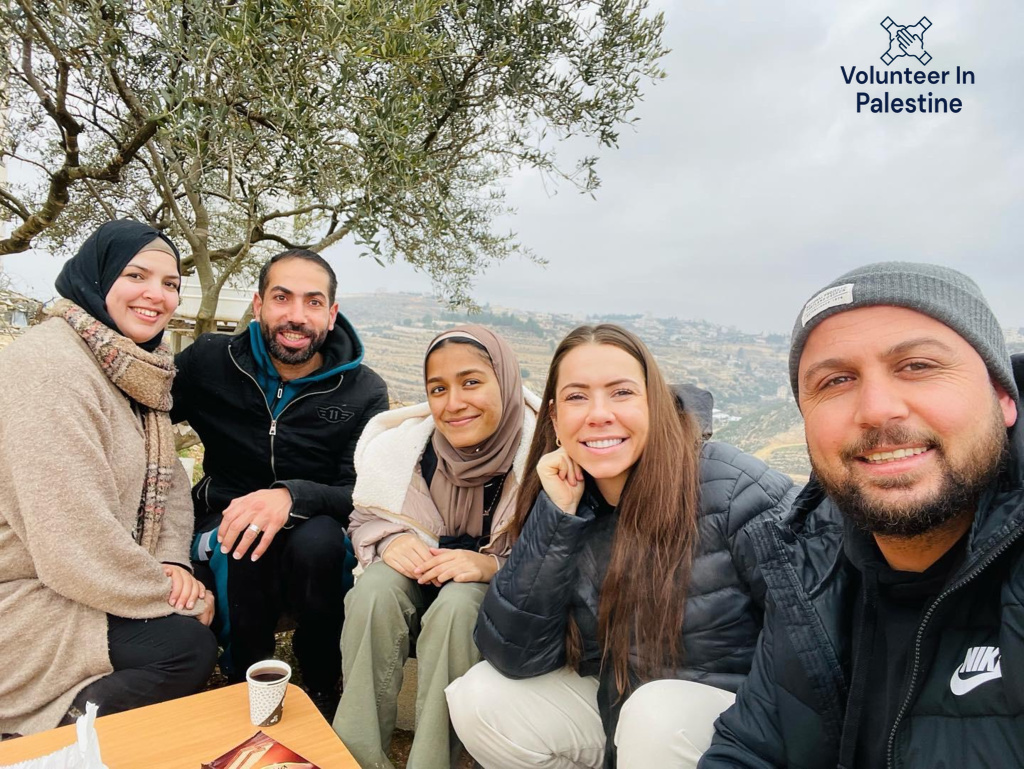
14. The Unique Industries And Handicrafts
Palestine creates some of the most unique products in the world, which makes it a wonderful place to go shopping for gifts and souvenirs, whether for yourself or your loved ones. While some products are unique to certain areas, others are created all over Palestine.
The city of Hebron, for example, is famous for its distinctive glass, pottery, and ceramic products, crafted in factories in which a few dedicated workers use their skills to create beautiful pieces of art. Glass is painstakingly blown using age-old methods passed down from one generation to the next, and ceramics are hand-sculpted and painted with intricate detail. The factories often have an open layout, allowing visitors to watch the artists in action.
Hebron is also famous for its shoe-making and leather industries, although this has dramatically declined in recent years due to competition from cheap foreign imports and economic restrictions caused by the Israeli occupation. The keffiyeh is another textile that is an important symbol of Palestinian culture and identity. The only remaining factory in all of Palestine is in Hebron – the Hirbawi factory.
The Bethlehem area is well-known for its centuries-old history of crafting olive-wood carvings. These carvings include kitchenware products, souvenirs, religious items, and other decorative pieces. Olive-wood carvings are widely available and are renowned for the wood’s natural beauty and resilience. Carvings made from mother-of-pearl are also prominent in Bethlehem and its surrounding areas. Both olive wood and mother-of-pearl carvings are often made in small local factories using labor-intensive practices to create products of extremely high quality.
Nablus is famous for its Nabulsi olive oil soap. The most well-known company makes theirs in a factory by hand using only natural ingredients and +400 years of soap-making expertise. Tourists and visitors are able to visit the factory and buy soap directly from the factory or many shops all across Palestine. The range of soap products has been extended, and you can buy soap made with fresh olive oil and mixed with various herbs and fruits (including sage, rosemary, grapes, lavender, and black cumin) as well as mud from the Dead Sea. You can also find a variety of cosmetic products with olive oil and/or Dead Sea mud throughout Palestine.
You can find beautifully embroidered clothing, scarves, and other textiles across Palestine, such as tablecloths and pillowcases. Traditional Palestinian embroidery is called tatreez and is predominantly practiced by Palestinian women. Tatreez is not only beautiful, it is a fundamental part of Palestinian culture, identity and heritage. Palestinian women and girls have historically embroidered their thoubs (traditional dresses) with motifs that can indicate which city or village they come from. Tatreez is a means of self-expression, storytelling, and communication. It also often has a strong economic significance as it helps a number of Palestinian women (including refugees) to create an income for their families while preserving and passing down their culture.
You are sure to find a variety of other locally made handicraft items across Palestine. Some examples are dolls, toys, purses, wallets, bags, shawls, jewelry, paintings, woven products, and many different souvenirs. So make sure you leave some empty space in your suitcase for shopping!
15. The Arabic Language
Arabic is a beautiful and complex language with a seemingly endless number of dialects and accents. Levantine Arabic is the dialect of choice in Palestine, and if you’re studying the language, this is especially important. Levantine Arabic, used primarily in Jordan, Syria, Lebanon, and Palestine, most closely resembles the formal Modern Standard Arabic taught in universities and language centers.
Not only will you hear Arabic everywhere, but you will see it too. Arabic calligraphy is very beautiful, and you are sure to see a lot of it all around Palestine, whether as part of a building’s architecture or as souvenirs. If you are interested in learning it, learning Arabic in Palestine is thus a great choice.
16. It’s A Great Place To Volunteer Or Study Arabic
Many international visitors come to Palestine to study Arabic for the first time or to continue their previous Arabic studies. Studying Arabic in an Arabic-speaking society is an excellent way of acquiring conversation skills much faster than you would elsewhere. “When you’re surrounded by a language and you have to use it every day, you can learn it very quickly,” said one Arabic student.
There are also many international visitors who come to Palestine to volunteer. There are many volunteer opportunities in Palestine, everything from teaching English or another language, volunteering with refugees, volunteering in medicine and healthcare, to teaching music or dance. If you’re interested in volunteering and want to know why you should volunteer in Palestine, check out our other article on this topic.
17. Relax At Turkish Bath Or Hammam
After you’ve been walking a lot, you might want to relax in a Turkish bath or Hammam. After a visit and a scrub down, you are likely to feel the cleanest you have ever felt!
Due to the previous Ottoman occupation of Palestine, there are still a small number of operating Turkish Baths (“Hammams”) that you can visit. Note that in Palestine, there are certain times or days that are men-only or women-only.
You can find Al Shaqui Turkish Hammam in Al-Bireh (a village of Ramallah), Hammam Al Sultan in Hebron, Al-Shifaa Bath in the old city of Nablus, or a much more modern Turkish Bath called Lava in Bethlehem. There is one remaining Hammam called Al-Sammara in Gaza, but tourists are unable to enter Gaza due to it being under Israeli siege and blockade.
18. Go Birdwatching
If you are a keen birdwatcher or would like to start, you might be surprised to know that over 470 species of birds have been recorded in Palestine.
Many birds migrate between Africa and Europe or Asia via Palestine, so if you time your visit right, you can take advantage of the bird migration seasons.
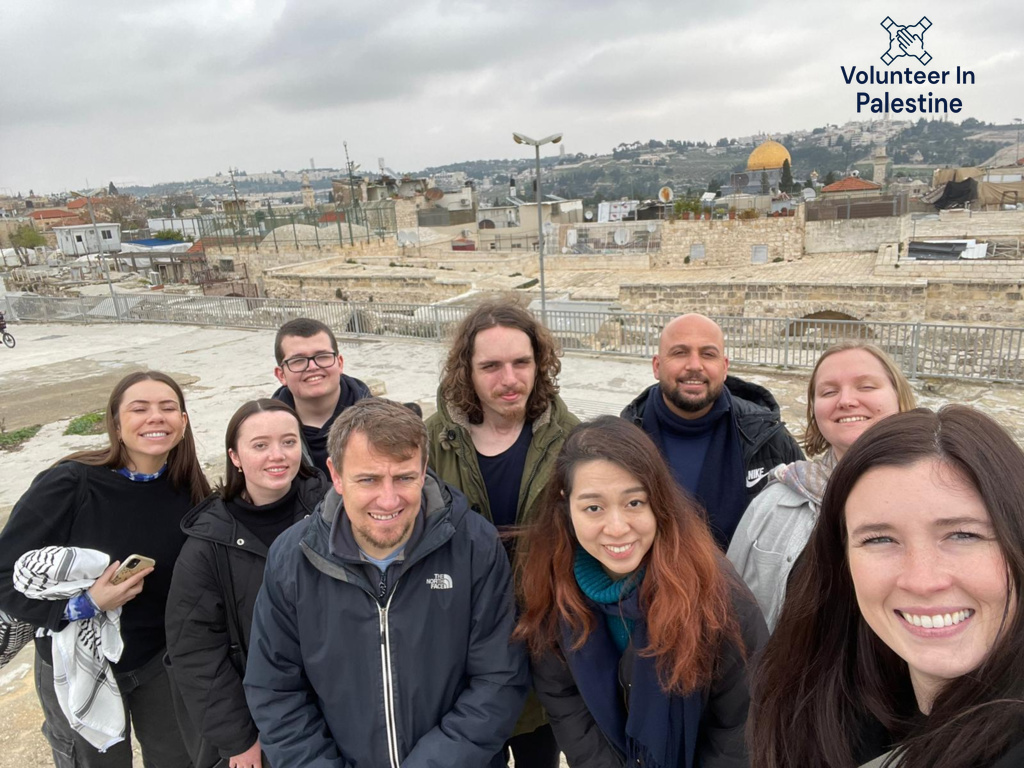
19. The Rich Biodiversity Of Flora And Fauna
If you have studied botany or zoology or are a nature lover, then Palestine has a lot to offer you. For example, in the West Bank, there are over 1600 species of flora (Historic Palestine has over 4500 species). Some of the most symbolic plants in Palestine are zaytoun (olive trees), sabar (cactus, but “sabar” also means patience in Arabic), za’atar (thyme), Yaffa oranges and the national flower – the Poppy Flower.
Additionally, there are over 780 species of birds, mammals, amphibians, and reptiles and more than 13,000 species of invertebrates. Did you know that the national bird of Palestine is the Palestinian Sunbird, and the Palestinian Mountain Gazelle is the national animal?
For a relatively small country in terms of landmass, Palestine has a very rich biodiversity and several different types of ecozones and habitats. If you are particularly interested in this topic, you can visit the Palestinian Museum of Natural History in Bethlehem.
20. It’s The Land Of Olives
You will find olive trees planted in almost half of the West Bank and Gaza, many of which are hundreds or thousands of years old. The care taken for these trees is generally passed down in families from generation to generation. Palestinian families generally gather on their land between October and November each year to harvest their olive trees. Most of these olives are used to make olive oil, but a small percentage are used to make olive oil soap or pickle the olives in jars. Olive oil is a very important part of Palestinian cuisine and culture, and it is likely to be the most delicious olive oil you have ever tasted.
While which olive tree is the oldest in the world is disputed, it’s certain that one of the oldest is in Palestine. The tree is called Al-Badawi, and it’s found in Al-Walaja village, located between Jerusalem and Bethlehem. The exact age of Al-Badawi isn’t known, but it is estimated to be between 4,000-5,000 years old. A Palestinian man called Salah Abu Ali is charged with taking care of the tree, and he welcomes tourists and visitors wishing to see Al-Badawi. Salah said that Al-Badawi is “no less important than the Al-Aqsa or Ibrahimi mosques.”
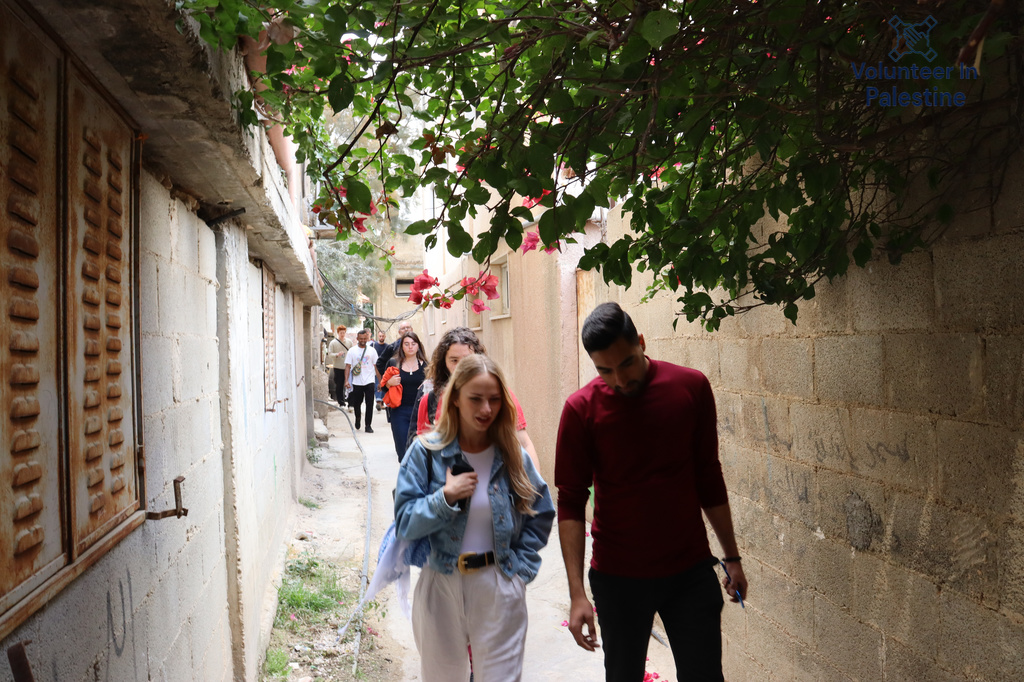
Olive trees are an integral part of Palestinian identity and heritage. Olive trees are often mentioned in Palestinian songs and poetry. One of the most famous examples of this is by the Palestinian poet Mahmoud Darwish who wrote, “If the Olive Trees knew the hands that planted them, Their Oil would become Tears.” Like the olive trees, Palestinians are resistant and resilient in unthinkably tough conditions and are rooted to their land.
We hope you have enjoyed these 20 reasons to visit Palestine and are excited to take a trip to Palestine, whether for a holiday, to go traveling, to study, to volunteer, or something else. There are many incredible things about Palestine, from the food and coffee to the rich history and culture, to the beautiful nature and old cities to the warm and hospitable people. A visit to Palestine will certainly challenge everything you have ever heard about it in the media in a very good way. We hope to see you in Palestine soon, and once you visit, Palestine is sure to stay in your heart forever.
Contact Us
Should you have any questions, please do not hesitate to contact us at:
WhatsApp:+972 599 479 880
Website: https://volunteerinpalestine.org/
Website: https://excellencenter.org/
Instagram: https://www.instagram.com/excellence.center
Facebook page: https://www.facebook.com/ExcellenceCenter
